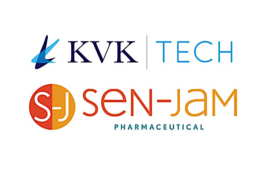From accelerating scientific breakthroughs and spotting previously elusive patterns in unwieldy global data masses, to enabling greater drug personalization, the scope for artificial intelligence in life sciences seems unlimited.
And, as other industries are experiencing, the technology already is tangible and something they must start planning for.
Intelligent internet and content searches that adapt to user preferences, automated personal assistants like Alexa and Siri, and customer care channels such as web chat, already are exploiting AI in everyday situations.
Via machine learning, a subset of AI, algorithms don’t just make clever connections and spot trends in masses of data. They also become increasingly refined and efficient at this over time, responding to the conditions they are exposed to and the results they find, all of which adds to the speed of discovery.
Automation is a big attraction of the AI proposition. If machines can get to grips with routine knowledge work, and do it more rapidly than humans ever could, it makes sense to pass along the load, freeing up experts for value-added work—as long as humans continue to perform quality checks on what AI systems are doing.
In frontline healthcare, smart systems already are making headway in patient diagnostics. Just recently, U.K. researchers in Oxford announced the availability of AI technology that can diagnose heart disease and lung cancer at a much earlier stage from analysis of patient scans.[1]
Meanwhile, connected devices are being used increasingly to feed patients’ data to those managing their care to monitor their conditions and enable earlier interventions.

Changing the Game
But what about life sciences? What powerful enabling or disruptive role might AI play here?
It’s a subject that will be central to many industry conferences this year—events such as BioTrinity 2018 held in April and featured sessions such as “AI and Drug Discovery,” and AI summits taking place everywhere from London[2] to Philadelphia.[3]
Even if it’s just to have a response ready for funders, partners, and patients, industry leaders understand that they need to have a position on AI, so these events tend to draw large crowds.
Machine intelligence has substantial potential for enhancing R&D through the ability to analyze large volumes of data leading to richer insights. To this end, applications, systems, and platforms have already been developed to transform clinical trial innovation.
This isn’t just about distilling subtler patterns from once unmanageable volumes of disparate data either. It also is about modeling and extrapolating from such findings to arrive at bolder hypotheses and deeper, more targeted work, to accelerate discoveries and the development of treatments.
Gaining Deeper Real World Insights
AI technology also offers a way to track global patient trends, concerns, experiences, behavior, and needs, enabling the life sciences industry to understand what is happening in the real world to a degree that hasn’t been possible previously.
This offers potential not only for more proactive and thorough monitoring of adverse events and other safety signals as drugs move into markets, but also for identifying emerging requirements, triggering new innovation.
Where the life sciences industry has traditionally been one step removed from patients, public Internet forums and social networks offer an opportunity to understand evolving demands and engage with patients in new ways.
AI already had proved itself for social media monitoring in other markets, whose best practices could be carried across to life sciences with a few adjustments.

Foundations for Innovation
For all of the excitement around AI, though, life sciences as an industry is not exactly known as an early adopter of new technology. So there are a number of things that need to happen if companies are to adapt to and exploit the potential ahead of them.
Once firms have accepted that change is coming, the next step is to prepare an IT and data environment that allows for new experimentation and insights within the restrictions of regulatory control and privacy protection.
This isn’t just about developing “big data” strategies, but rather preparing that data so it can be analyzed efficiently, accurately, and holistically using AI platforms to spot emerging trends, anomalies, concerns, and opportunities in a very efficient and granular way.
Start Small, Aim Big
For now, regulatory pressures are driving most data-related initiatives in life sciences. So this is a good place to start with AI—even if just for taking over some of the more repetitive or preparatory stages of submission creation, or content checking, to accelerate speed to market.
For example, by using machine learning, systems could “learn” how to produce better output, or the conditions most likely to result in a new marketing submission being accepted first time.
If data preparation work has to be done to fulfill regulatory demands, why not exploit this—laying the foundations for future innovation and testing just how powerful AI can be in transforming everyday processes?
The critical enabler for maximizing the potential of data is the creation of a comprehensive master data model—one that also includes inter-dependencies between the data in a way that can drive new efficiencies and increased impact through proactive process automation, boosted by AI and machine learning.
In 2018, every life sciences business is striving to be more agile, responsive, and patient centric. But this relies on a strong sense of purpose and a foundation of rich, ready-to-exploit data. So if companies are going to start anywhere, it should be in developing both of these.
_________________________________________________________________
References:
[1] AI early diagnosis could save heart and cancer patients, BBC News, January 2nd 2018: http://www.bbc.co.uk/news/health-42357257
[2] https://theaisummit.com/london/
[3] http://aiinnovationsummit.com/
About the Author
Siniša Belina is Senior Life Sciences Consultant at Amplexor Life Sciences.




